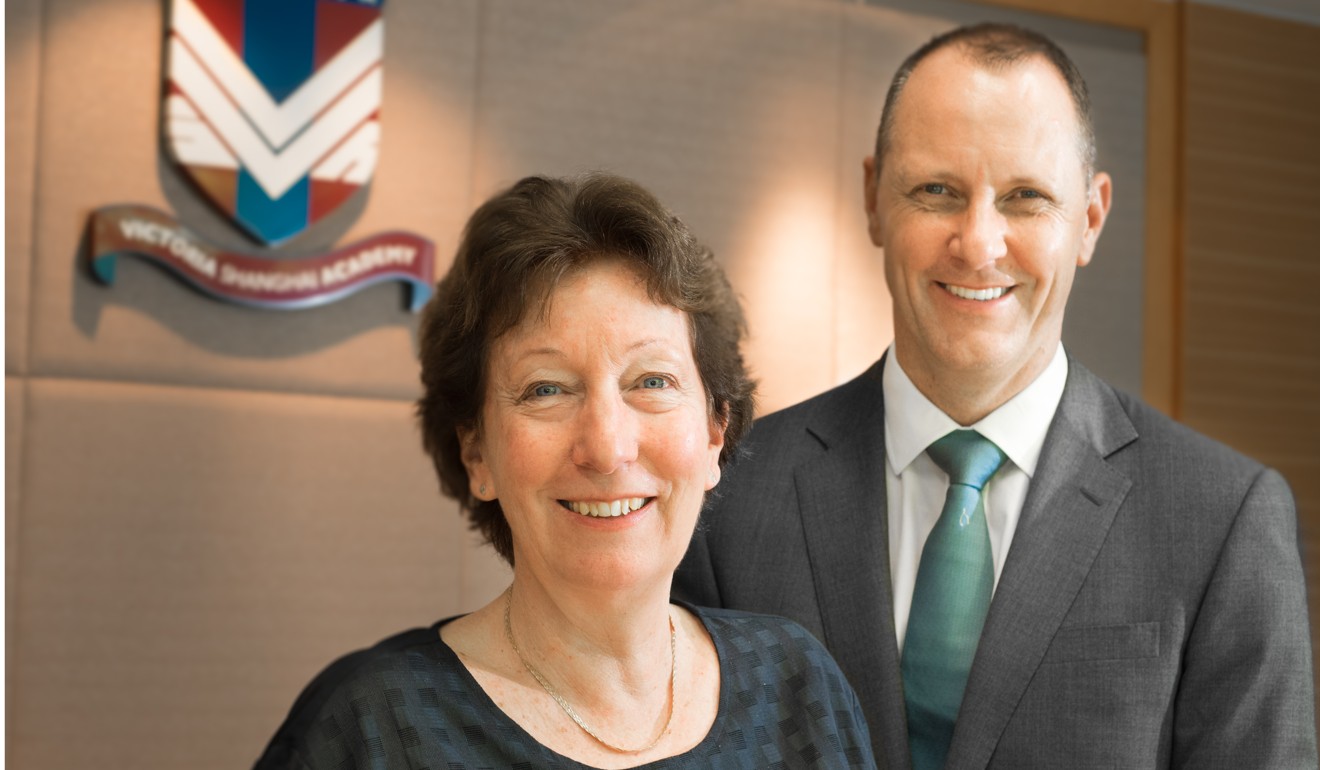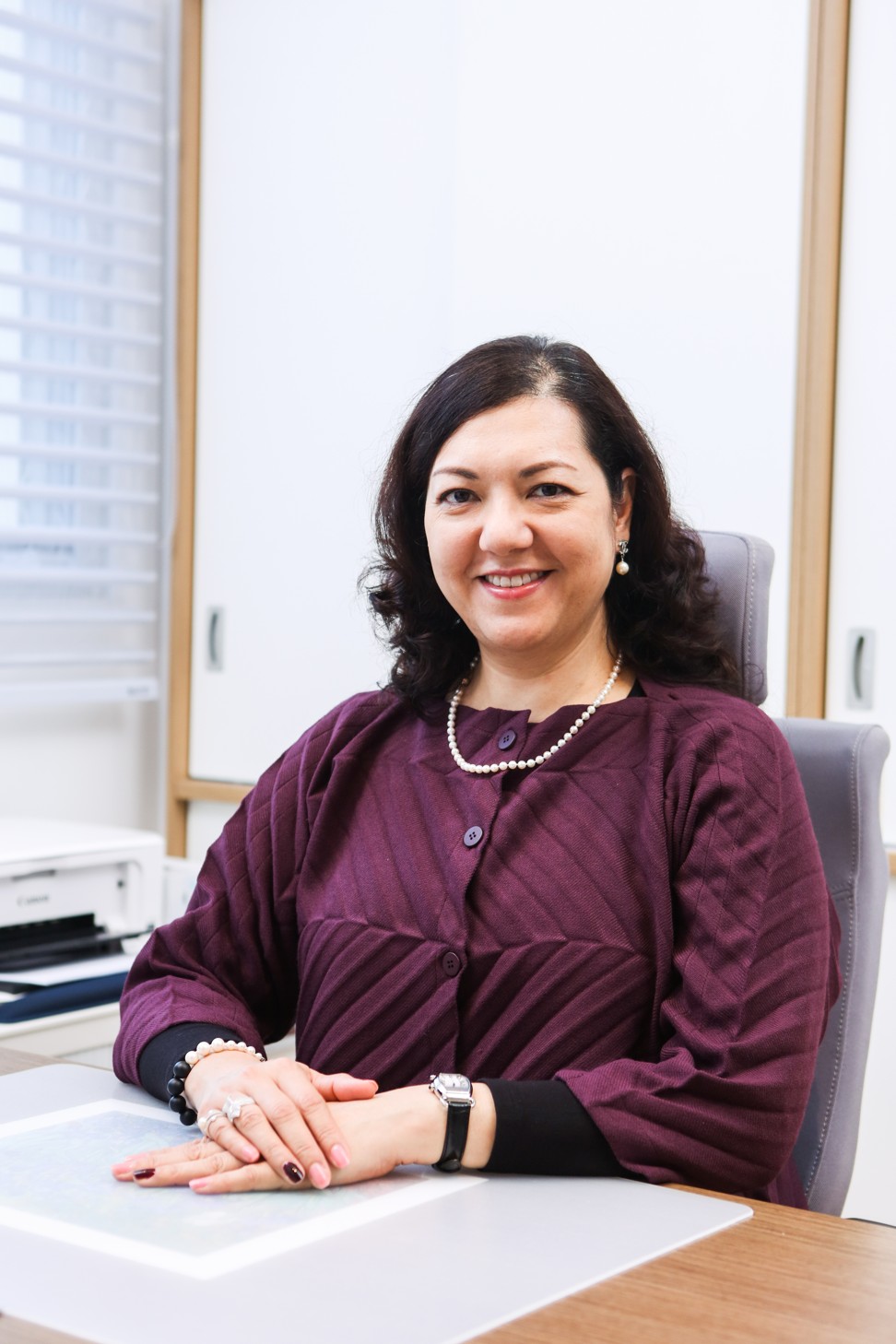
Speaking in two tongues
Bilingualism has become essential in education, but different schools approach it quite differently
The basic principles for effective bilingual education are well established. Start as young as possible, create an immersive environment, provide a cultural context, and offer extra individual support whenever this seems necessary.
But within these broad parameters, schools in Hong Kong have differing approaches to achieving the intended goal. This influences their classroom practices, curriculum structure, choice of materials, and allocation of resources.
In each case, though, the objective remains the same: to ensure all students acquire functional fluency in two main languages in both spoken and written forms.
“In our model, it’s simultaneously bilingual from Year 1,” says Dr Judith Guy, head of academy and secondary principal at the Victoria Shanghai Academy (VSA) in Aberdeen, which teaches in English and Mandarin. “There are two teachers per classroom, not to translate, but to expose the children to both languages at the same time and help them develop their understanding and vocabulary in parallel.”

Within the framework of the International Baccalaureate (IB) Primary Years Programme, classes for maths and other units of inquiry are taught this way. The two class teachers, who are both native speakers, cooperate closely in planning lessons and deciding which skill sets and concepts they need to develop.
One will start off by introducing the next task; the other then reinforces or expands on this by adding further information and details. There is also a lot of work in small groups where the children use both languages in discussing possible answers and completing their worksheets.
The only exceptions are the stand-alone lessons in English and Mandarin as distinct subjects – seven 40-minute lessons per week in each case. There, the focus is on grammar and improving reading and writing skills in the respective languages, with Pinyin used in Year 1 to ease the way into learning Chinese characters. Two specialist literacy coaches are on hand to support the teachers and offer one-to-one assistance to any children who may be finding certain aspects a bit of a struggle.
“We think the model is highly effective,” Guy says. “It’s expensive, but necessary. Of course, collaboration between the teachers and good year-group planning are very important.”
One aim within the curriculum is to ensure daily reading in each language. And there is an after-school activity class, especially for pupils who don’t have the chance to speak Mandarin or English at home.
“It is run by our literacy coaches, and students come down from the secondary section to help out,” says Ross Dawson, VSA’s primary principal. “In language learning, you need motivation, so it is important to keep children interested and make them proud of what they are doing.”
Specifically for English, the school uses a well-structured series of readers for Years 1 to 3, including fiction and non-fiction titles on topics such as new energy, making a movie, and learning about birds. These progressively introduce new words, ideas and contexts from which the pupils can extrapolate meanings. The themes are culturally diverse and, broadly speaking, tie in with the units of inquiry the class is studying.
“We also use an online system, so kids can read books on iPads,” Dawson says. “Besides that, our teachers are trained in a lot of techniques and ‘visible thinking’ routines that encourage students to open up and brainstorm. As a result, they want to talk and make use of their language skills, and their confidence grows. We also teach kids about the brain from Year 1, how neurons form pathways, and how you have to practise something to learn it well.”
For Mandarin, the school has in effect developed its own curriculum and learning resources. The basis is still mastering the first 100 and then 1,000 most common characters and simple sentence structures. But Year 1 pupils are taught Pinyin to help them remember the correct pronunciation of each traditional character. And most of the in-class reading materials for different levels are ordered from Taiwan, for lack of anything more suitable available locally.
“Some students find it quite difficult to write Chinese, so they need a lot of encouragement,” says Penn Chow, VSA’s primary deputy principal. “Therefore, we make a point of letting parents know what we are doing to increase home/school cooperation.”
Going a step further, Pinyin classes are now arranged for interested parents to provide an extra source of support and encouragement. More generally, discussions reveal that people’s expectations of bilingual proficiency are on a spectrum. For the school, though, the aim is that every child moving on to the IB’s Middle Years Programme should take language and literature classes for native speakers in both English and Mandarin.
“We also encourage as many as possible to do a bilingual IB Diploma,” Guy says. “We have continuous discourse on how to strengthen our programmes and offer better support. It is a complex learning environment, but all parents are very aware of what we are trying to do. In our school, children are learning in both languages and their ability is developed as part of the standards lessons.”
Two pupils to benefit from the system are 17-year-old Kaiser Kong, now in Year 11, and 12-year-old Ainsley Ternes, who is currently in Year 7, from which point most subjects such as science and humanities are taught in English.
They maintain, though, the ability to switch effortlessly between languages.
“VSA attaches equal value to Mandarin and English and expects a very high standard in both,” says Kong. “It’s about training and following a process. In a two-language system, you learn to think in two ways and it becomes built-in, so you can switch without even noticing.”
For Ternes, who speaks to her mother in Cantonese and has now started to learn French, the hardest part back in Year 1 was getting used to the different order and structure of words.
“I was confused at first, but it’s mainly a matter of practice and now it’s completely automatic,” she says. “In primary, everything we did was bilingual, but in secondary, there is no need to do every lesson in English and Chinese. When talking with friends, you mix it up, maybe starting a conversation in one language and finishing in the other.”
Ramida Din, principal of the Chinese Academy, a new private school in Causeway Bay starting classes for Grade 1 primary pupils in October, not surprisingly has clear views on how to marry theory and practice.

The school uses English and Mandarin in a rough 60:40 ratio. All the teachers are native speakers and extra support is offered for children who need help with the fundamental skills. As further grades are added for older children, the medium of instruction will be English for certain subjects, but there will also be specially designed units where Mandarin is used to teach things such as Chinese calligraphy and poetry, wushu, and a Chinese musical instrument.
In this way, pupils will be able to apply what they have covered in specialist languages classes (eight 45-minute lessons a week for each), while hand in hand learning about the history and variety of traditional Chinese culture. For other thematic units, perhaps dealing with social issues or the environment, the intention is that either language could be used for students in different years.
“The key principle for providing effective bilingual education is a balanced curriculum,” Din says. “There must be sufficient opportunities to use both languages in a wide range of subjects and situations – that’s very important. Children need to see language as a tool to learning.”
In Grade 1 English classes, there is initial emphasis on phonics and guided reading, which includes repetition of words and examples to follow, on a daily basis. These are seen as the building blocks for further advancement. In due course, process writing is introduced, showing how to get and develop and then connect them in a story, as well as how to collect and organise information for non-fiction topics.
“We believe that writing is about expressing ideas, sharing observations, and reporting on research, so the language comes alive,” Din says. “We don’t ask teachers to circle mistakes, but instead to suggest better words or phrases, and we will put good work on the bulletin board in order to celebrate big and small successes.”
For both languages, the school will also focus on reading skills and strategies. This helps pupils to compare and contrast and to draw and understand inferences. It is also a way to blend elements of creativity and higher-order thinking from which all pupils can benefit. Lesson plans include show-and-tell sessions where they can talk about their family, toys or pets. The teachers will give clear guidelines to help them prepare and will ask open-ended questions to encourage further discussion.
Specifically for Mandarin, there is a textbook, but this is just one part of a school-based curriculum which looks to offer a wider range of reading material and more interesting stories.
“In the admission assessment, we look at general communication skills and don’t necessarily expect knowledge of both languages,” Din says. “But the first three months are basically immersion, with a lot of phonics to decode words, reading aloud by teachers, and recognising the 100 most common Chinese characters. Then children develop the interest and abilities to learn more on their own. We also aim to maximise the percentage of time in each class for students to express themselves and engage in speaking both languages.”
At Delia Memorial School (Glee Path) in Mei Foo Sun Chuen, the challenge is slightly different. Currently using the local DSE syllabus, the school caters to around 600 secondary-level pupils in Forms 1 to 6, many of whom are from non-Chinese speaking ethnic minorities and may be relatively new to Hong Kong. The classroom languages are English and Cantonese.

“Our concept is to impose two-way immersion (TWI),” says Delia principal Chan Kui-pui. “When enrolling students of other cultural groups and ethnicities, we are aware that we have to bring them together.
“The rationale is to create an environment where, no matter what their background, kids study together in bilingual classes and are encouraged to use both languages and understand other cultures.”
When admitted, some students may be proficient in Cantonese or English, but that cannot be taken for granted. Also, they may speak a different mother tongue at home, but not necessarily read or write it fluently.
“The situation can be really complicated,” Chan says. “So, we generally start with whichever language – English or Cantonese – they have used most in the past, and take it from there.”
Overall, the school schedules between seven and nine lessons per week for each language. Initially, pupils are split into groups based on ability and given additional coaching where necessary to bring them up to speed.
For other subjects in the curriculum, there are Cantonese- and English-medium lessons. The aim, though, is for pupils to migrate into the bilingual or TWI classes for each subject, which are available for every form.
The TWI methodology expects the single teacher per class to start with one language and thenswitch when introducing a new topic or the next phase of an exercise. Clearly, prompts or re-explanations may be needed, but this should not mean translating the whole thing into a pupil’s preferred language.
“You have to be aware of what pupils face when using their second language and be ready to express or explain some concepts in a simpler way to facilitate the exchange of ideas,” says Lam Lok-kam, who teaches science for Forms 1 to 3 and biology for Forms 4 to 6.
“For example, when preparing a class on energy conversion or earthquakes, I pick words so that they first understand the concept, but will then push the students to explain it in their own words and add something more challenging.”
For Lam Ka-ngai, who teaches English as a second language for Forms 1 to 5, a key priority is to insist on correct sentence structure and use of vocabulary to ensure high standards and steady progress.
“I have tailor-made exercises for new students, who may not yet know the alphabet, so they can catch up quickly and handle daily conversations,” she says. “We use scaffolding methodologies and, after three months, can usually assign them into groups with more proficient students.”
